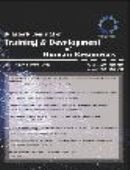-
-
List of Articles
-
Open Access Article
1 - Developing Professional Development Programs for Managers and Staff in the Branch of Monetary and Banking
hasan asheghi Mohammad -
Open Access Article
2 - Studying effective Factors on Facilitating the Transfer of Learning to the Workplace from the Perspective of Organizational Environment
احمدعلی روح الهی hassan mahjob mehdi kherandish -
Open Access Article
3 - Studying the Barriers of Innovation in Organizational Training: the usage of content analysis in training sector of national Iranian oil company
-
Open Access Article
4 - Studying Pathology of In-service Training Courses for OTC Group Employees according to the CIPP Model
Bahareh Mansouri Kasvaei Mehdi Shariatmadari -
Open Access Article
5 - The Analyses of In-service Training Programs for Personnel of Kerman National Gas Company based on SWOT Model
-
Open Access Article
6 - Designing Excellence Management Model in the Cement Industry Using Human Capital Approach
morteza hashempour -
Open Access Article
7 - Presenting Sustainable Human Resource Management Scorecard in Knowledge-based ICT Companies in Iran
ebrahim salehi omran Soheila Hashemi
-
The rights to this website are owned by the Raimag Press Management System.
Copyright © 2017-2026







